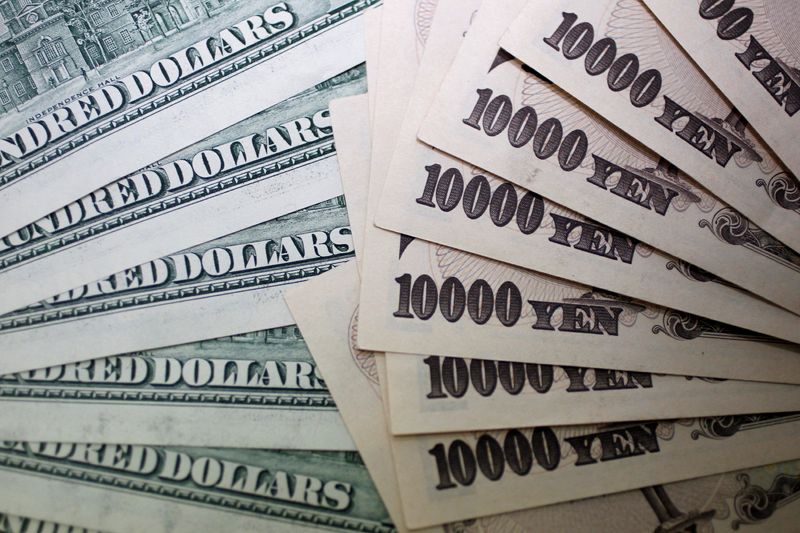The U.S. dollar has been experiencing significant strength, nearing a three-month high against major currencies, buoyed largely by expectations of a more cautious approach from the Federal Reserve regarding interest rate cuts. As of early Thursday, the dollar index, which measures the currency’s performance against six major rivals including the euro and yen, was recorded at 104.38, close to its recent peak of 104.57 seen in late July. Analysts attribute this upward movement to recent robust macroeconomic data from the U.S. and hawkish perspectives from Fed officials, which have led to a decline in anticipated monetary easing. According to the CME Group’s FedWatch Tool, market expectations for 50-basis-point rate cuts in the remaining meetings of 2024 dropped to about 65% from 70% just one day prior, a notable decline from approximately 85% a week earlier.
The shift in expectations was influenced by comments from key Federal Reserve officials including Kansas City Fed President Jeffrey Schmid, who expressed a desire to “avoid outsized moves,” and Philadelphia Fed President Patrick Harker, who advocated for a “slow, methodical approach” to future easing. This cautious stance from the Fed has had a direct impact on U.S. Treasury yields, with the 10-year yield reaching 4.26%, the highest level in three months. This rise in yields typically exerts downward pressure on the Japanese yen, contributing to the dollar’s strength. As a result, the dollar surged to 153.19 yen, the highest point since late July, before settling at 152.62 yen. Analysts, such as Rodrigo Catril from National Australia Bank, noted that the combination of solid economic indicators and the Fed’s messaging has created a level of unease that favors the dollar, particularly against the yen among G10 peers.
In addition to Fed policy expectations, market sentiment has also shifted due to political developments. There is an increasing optimism surrounding a potential second presidential term for former President Trump, which could lead to inflationary policies, including the imposition of tariffs. This speculation has gained traction, as reflected in rising bets on the cryptocurrency-based prediction market, Polymarket. While opinion polls suggest a tightly contested race between Trump and the Democratic candidate Vice President Kamala Harris, the market’s movements indicate a growing belief in a Trump victory. This political backdrop adds a layer of unpredictability and could influence economic and fiscal policies in the future.
Japan’s political landscape is also contributing to market dynamics, particularly ahead of the upcoming elections. Recent polls indicate that the ruling coalition may potentially lose its parliamentary majority in Sunday’s elections, which could complicate the Bank of Japan’s planned monetary tightening. The central bank is expected to announce its policy decision on October 31, but analysts do not anticipate any significant changes at this juncture. The potential for political instability could weigh on the yen and influence investor sentiment in the region, particularly if the outcome of the elections leads to a more uncertain economic environment.
Meanwhile, the euro is experiencing its own set of challenges, having plummeted to a nearly four-month low of $1.07612. This downturn reflects increasing market expectations for more aggressive and larger rate cuts from the European Central Bank (ECB), as a number of policymakers have recently warned about the risks associated with undershooting the central bank’s inflation target of 2%. This marks a shift in tone from a previously hawkish approach taken in the last two years aimed at curbing rising prices. ECB President Christine Lagarde has called for caution in forthcoming decisions, whereas other members, like Mario Centeno, have floated the idea of a 50-basis-point cut in the ECB’s upcoming December meeting.
As the economic landscape fluctuates, it is apparent that both the Fed and the ECB are navigating complex challenges that could have lasting impacts on their respective currencies, as well as on global markets. The expectations for U.S. monetary policy to slow down the pace of rate cuts contrasts sharply with the European situation, where market players are increasingly bracing for a shift towards more accommodative monetary policy. This stark divergence in approaches, amid upcoming political elections in both the U.S. and Japan, creates a turbulent environment for traders and investors, as they grapple with both macroeconomic data and political risks that could sway future market outcomes.
Consequently, the U.S. dollar’s recent strength may represent a confluence of financial fundamentals and political sentiment, illustrating how interconnected these factors are in shaping currency markets. The evolution of interest rate policies, combined with the political landscape, not only influences market positioning but also sets the stage for future trading strategies as investors closely monitor developments in both economic indicators and political events. The coming weeks will be critical in determining how these dynamics unfold, particularly with significant elections in Japan and ongoing developments in the U.S. leading up to the next presidential race. Traders and analysts alike will need to remain vigilant, as shifts in sentiment could lead to volatility across major currency pairs.

